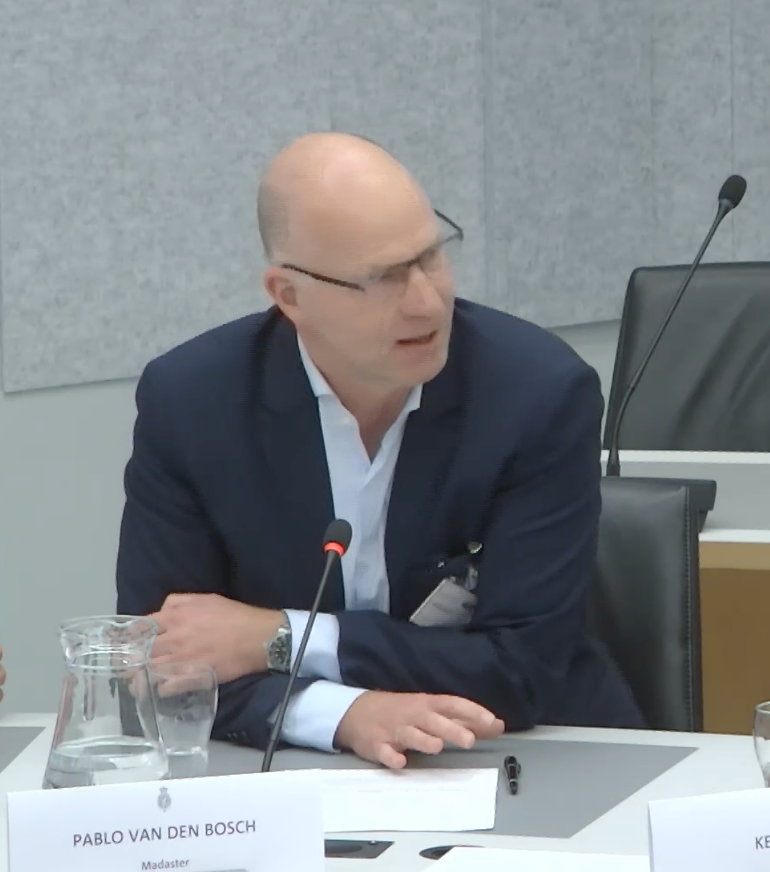Creating a digital circularity fingerprint for products
If you are planning, designing, or investing in buildings that are claimed to contain ‘circular’ products, how do you know if the reporting includes circularity data like composition thresholds, recyclability and recycled content? Has something been designed with disassembly in mind, so you could recover value from it? So far, owners, builders and investors are relying on high-level estimates, such as building-level certifications or company-level assessments, or on a maze of product sustainability certifications; but there are no widely accepted standardised data on circularity at product level. For many manufacturers and suppliers, it is time-consuming and costly to get this information, which may not always be reliabel. Trade secrets can stand in the way of transparency. Manufacturers are thus forced to send different data sets in different formats to customers and product platforms. Furthermore, governments and digital platforms sometimes use ‘generic’ product descriptions based on generic lists of materials, in cases where it is difficult to obtain standardised data from various suppliers of construction products. Generic lists are useful for calculating the gross weight of bulk materials, but are unreliable for recycled and recyclable content, and the composition of complex, high-value products in a building. The lack of specifics creates risks for building owners. An example is the many coatings used on steel, aluminium, window frames and in interiors; coatings to which both the building’s occupants and the environment are being exposed. Generic lists usually do not provide any specifics on these coatings. This clearly calls for a solution.
A standardised approach to providing circular information on individual products and models could solve this matter. The Circularity Dataset Initiative is working hard to achieve this. On the initiative of the Luxembourg Ministry of the Economy and with the support of consulting firm +ImpaKT and renowned international industrial leaders, the Product Circularity Data Sheet (PCDS) has been developed. What is the PCDS exactly? We discussed this with Jérôme Petry (Deputy Director Sustainable Technologies of the Ministère de l’Économie – Luxembourg) and Thibaut Wautelet (Project Manager +ImpaKT).
First of all, what is the PCDS?
In any case, it is not a product passport or scoring or rating mechanism, Wautelet points out. ‘Instead, the PCDS is a protocol to support platforms by providing circularity data as input. The goal is to save time and costs throughout the value chain, or rather the Value Cycle in the circular economy, by sharing data more efficiently in an open format.’ How? Petry explains the three elements of such data-sharing: ‘First, there is the data template based on true/false statements which allows people to reply to questions without disclosing proprietary information. Second, there is a guidance document providing common definitions and instructions for filling out the PCDS. In fact, the standardised system allows for local and auditable data storage. These data are stored in the manufacturer’s own database, not in a central database. Third, the data exchange platform enables the trusted exchange of data between someone who requests a PCDS and a company that produces it.’
Isn’t circular product information already known through other standards/certifications that the PCDS can connect to?
Wautelet: ‘Data is sometimes available in bits and pieces, in various formats. There is a real lack of standardised and coordinated data exchange throughout the value chain. Such lack of data is especially a problem for the 95% of suppliers who are SMEs and cannot afford all these certifications and complex compliance requirements.’ Petry: ‘These types of challenges were also identified, together with the ISO technical committee on circular economy (known as 323) who launched a new proposal for a standard based on the Product Circularity Data Sheet.’
What does it mean for manufacturers when they start working with it?
Petry: ‘It is a new way of working. The PCDS data template only contains true/false statements and not the full proprietary details. If PCDS users want more details, they can ask the manufacturer for more information, on the basis of confidentiality. It’s a way of providing basic data without losing competitive advantage.’ He adds: ‘The format can easily be integrated into any manufacturer’s or platform’s existing system, or the PCDS stand-alone format can be used. The data can be audited by an accredited third-party verifier to validate the statement and create confidence about the system. Wautelet adds: ‘It’s all in an easy-to-extract XML format. There is no central or proprietary data storage, so the manufacturers keep control over their own data. Furthermore, the data exchange protocol aims to use enhanced APIs in order to integrate with existing solutions and provide input from the PCDS for a given solution. This is the kind of collaboration we are seeking together with a platform like Madaster.’
Why is it so valuable for manufacturers and suppliers to switch to a standardised approach to offering product information?
Petry and Wautelet explain that there are many advantages, depending on what you want to do. The major advantage is the huge saving in time and costs. Petry: ‘The second biggest plus is that sharing of standardised circular data across the value cycle is a big enabler for new circular business models. It can also drive circular design by improving products in such a way that more statements in the PCDS have a YES answer.’
Wautelet indicates that manufacturers have mentioned many advantages for both internal and external purposes. These include filling circularity data gaps from suppliers in a standard way, introducing new suppliers to circular product design by showing them what’s expected, interacting with external platforms, improving brand value through verifiable transparency statements and more.
What makes the content of the PCDS reliable?
Petry: ‘PCDS data is made more reliable through the third-party auditing system, which is being developed in parallel with the ISO standardisation. The mechanism will be defined under five different levels, each of which contributing to increased reliability.’ Wautelet adds: ‘To keep auditing costs low, it can be included in the regular sustainability audit, as many companies already have done. Moreover, some basic ISO-level compliance requirements, such as ISO 9001, give basic guarantees about a company’s capacities.’
How exactly does the data exchange take place?
Petry and Wautelet state that the standard will lay out more details of the data exchange protocol and the format in which the data has to be kept. The focus will be on data quality, auditability and finally the secure exchange between trusted partners. Wautelet: ‘Data exchange is always a multi-layered thing so let’s do so piece by piece, to keep it manageble. The whole PCDS is available in a machine-readable XML format, so that each line entry or the complete set can be automatically extracted to any other platform with an API, or just be cut and pasted, manually. However, the statements can also be uploaded into the company’s internal IT system; so, whatever system a company uses, it can generate a PCDS according to the standard format. To be clear, there is no central database or mandatory use of fee-based software. There could be fee-for-service add-ons, but these aren’t essential for the basic PCDS.’
Who is currently involved in the design and implementation of the PCDS?
Petry says those involved form a community of more than 50 companies from all over the world: ‘We have regular requests by companies wanting to join our effort. This growth will be supported by creating a non-profit structure to continue the elaboration and internationalisation of the PCDS initiative.’ Equally important, according to Wautelet, is the cooperation with passport initiatives, such as the EU Digital Product Passport, and certification schemes, such as that of the Cradle-to-Cradle Product Innovation Institute. He also emphasises that companies who operate in the United States and China are also involved, here.
Are there pilot projects where the PCDS is already being implemented?
Petry indicates that, since 2020, various pilot projects have been launched in different sectors in order to validate the secure use of the PCDS. Wautelet gives examples: ‘The platform Cobuilder, which has thousands of customers in north-western Europe, is participating in the ISO data template development. Madaster is piloting a PCDS for products and materials that are incorporated in a parking garage in Luxembourg. AGC Glass has done a pilot project with its suppliers. Many others are starting the piloting process, but we’re always looking for more partners to do this. There are no costs for pilot projects.’
What is needed to establish the PCDS as an internationally accepted data set?
Petry: ‘The strong response by internal peers shows the level of interest in building up the PCDS ecosystem.’ Wautelet: ‘The first thing is to get something practical in the marketplace. Many initiatives are in the development phase, but we need something basic right now in order to avoid a lot of costs and confusion in the next few years. So, just getting the PCDS into use is a main objective, and for that we’re quickly finalising the machine-readable data exchange format. Meanwhile, the ISO process will take 2–3 years, and we are especially happy to see enthusiastic participation by Asian countries where so much of the manufacturing is located. It’s far more than only a European thing.’



